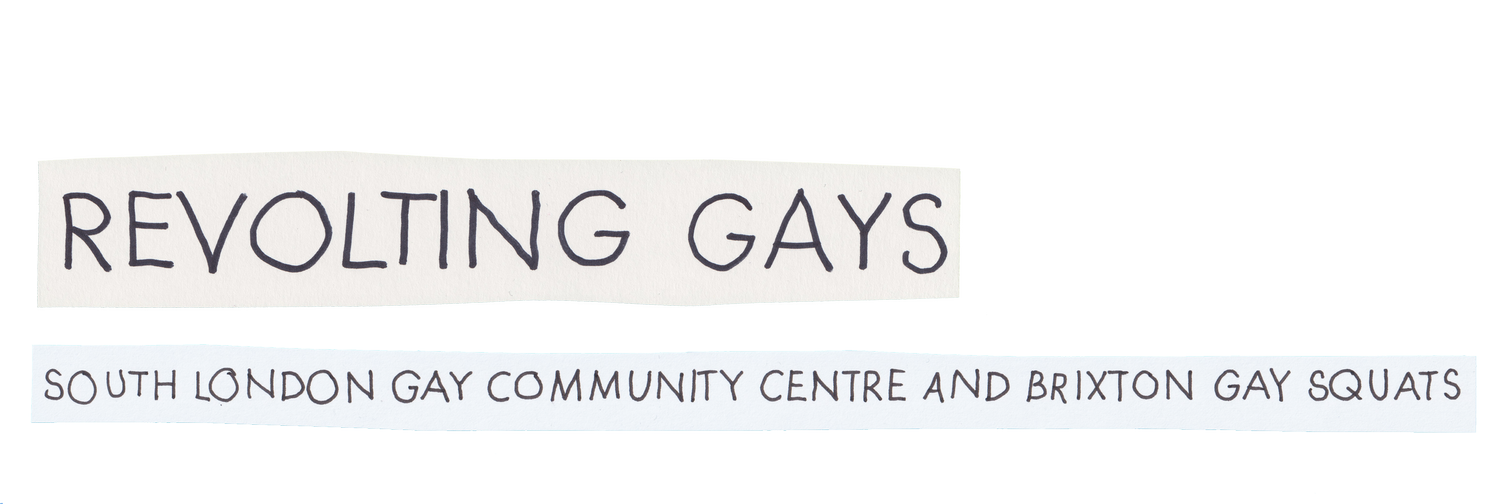In the 1970s Lambeth became one of the most squatted areas in London especially Brixton and the immediately surrounding areas. The Railton/Mayall Road Housing Action Area, where the South London Gay Community Centre and gay squats were established, covered one of the most dilapidated slum areas of the Borough with only twenty two houses thought to be fit for habitation (1977 figures). Boarded up buildings were indicative of an area blighted by neglect. With the decayed state of housing in the borough and a huge shortage of dwellings, leading to homelessness and widespread overcrowding, there was an urgent need for Lambeth Council to redevelop whole areas and increase council housing stock. With sluggish progress in providing homes for the people of Lambeth squatting properties that had been empty, sometimes for years, became the norm for more adventurous people and squatters' groups responding to the urgency of the situation. Not only were homes taken to house people but squatting in shop front buildings allowed the opportunity to transform the premises into community based 'alternative' amenities such as bookshops, cafes, radical newspapers, popular music gigs, meeting places for squatters and claimants unions, women's centres, 'men's groups', food cooperatives, free advice centres and black radical and revolutionary organisations. Buildings were also occupied for Blues parties and shebeens as informal social centres for mostly black people many of whom had been excluded by racist publicans and club owners. There was also a lively street culture of tumultuous music, ganja, drinking and carousing
The squatters movement to house the homeless and to provide social amenities took off in the late 1960s with Ron Bailey as the main initiator. By the mid 1970s there were about 30,000 squatters in London alone responding to the chronic housing crisis. The local authorities and private landlords were hostile and sought evictions though they were much delayed by legislation.
Lambeth Council's attempts at instigating various redevelopment plans were abandoned due to bureaucratic delay, indecision and less favourable economic conditions. The attitude of Lambeth Council towards squatters was hostile. Often empty properties would be deliberately vandalised by the council to prevent squatting and evictions were readily sought. However in May 1978 a new Labour Council was elected with the revolutionary socialist Ted Knight as leader. As a result of this new left-wing administration a more supportive approach to squatting was adopted.
Housing policy was geared towards families which meant that for gay people, who were automatically excluded because of their 'single' status, squatting proved to be an option to escape from isolation, loneliness and homelessness or simply to be with other out-loud-and-proud gay people.
The Elephant & Castle pub opposite Vauxhall rail and underground station. The South London Gay Community Centre was squatted in part as an attempt to provide an alternative to the scarce gay commercial scene that was often overcrowded, inhospitable and subjected to police raids and harassment.
The Father Redcap in Camberwell, South London, was raided and closed down by the police in 1974 for keeping a 'disorderly house' because gay men were seen dancing together.
Royal Vauxhall Tavern in the 70s. Still going strong despite new ownership and the threat of redevelopment into flats
Lambeth offered little in terms of space in which gay people could socialise. The Royal Vauxhall Tavern and the Elephant and Castle public houses could be found at the northern fringes of the borough and were invariably overcrowded. Further South at the corner of Vassal Road and Camberwell New Road the Union Tavern provided occasional drag shows and for those more adventurous a journey eastwards into the neighbouring borough of Southwark would take them to the Father Redcap at least until 1974 when it was closed down for 'disorderly conduct' after police surveillance and harassment in a law dating from 1839.
Excerpt from the Squatters Handbook
Against the exploitative and overcrowded gay scene and the fact that the South London Gay Liberation Front had been unable to find a place to firmly establish itself Railton Road, which already housed many squatted groups in the area, was ripe for the establishment of a gay community centre with the aim of providing an open, friendly and low cost place to meet, socialise, politicise and come out loud and proud.
Prior to the establishment of the gay community centre in 1974 the South London Gay Liberation Front created several campaigns to establish the presence of out gay people as early as 1972. A separate group of radical drag queens in that same year set up a commune in Brixton which will be the subject of our next section.
Manufactured scare-mongering about squatters taking over people’s homes.
Piers Corbyn, brother of Jeremy, far left. He was instrumental in setting up a very active and successful squatters movement in the London borough of Southwark in the 1970s
Not for those who cannot afford a mortgage, rent or rates (community charge). This was the case for many thousands of Lambeth residents in the 70s.










